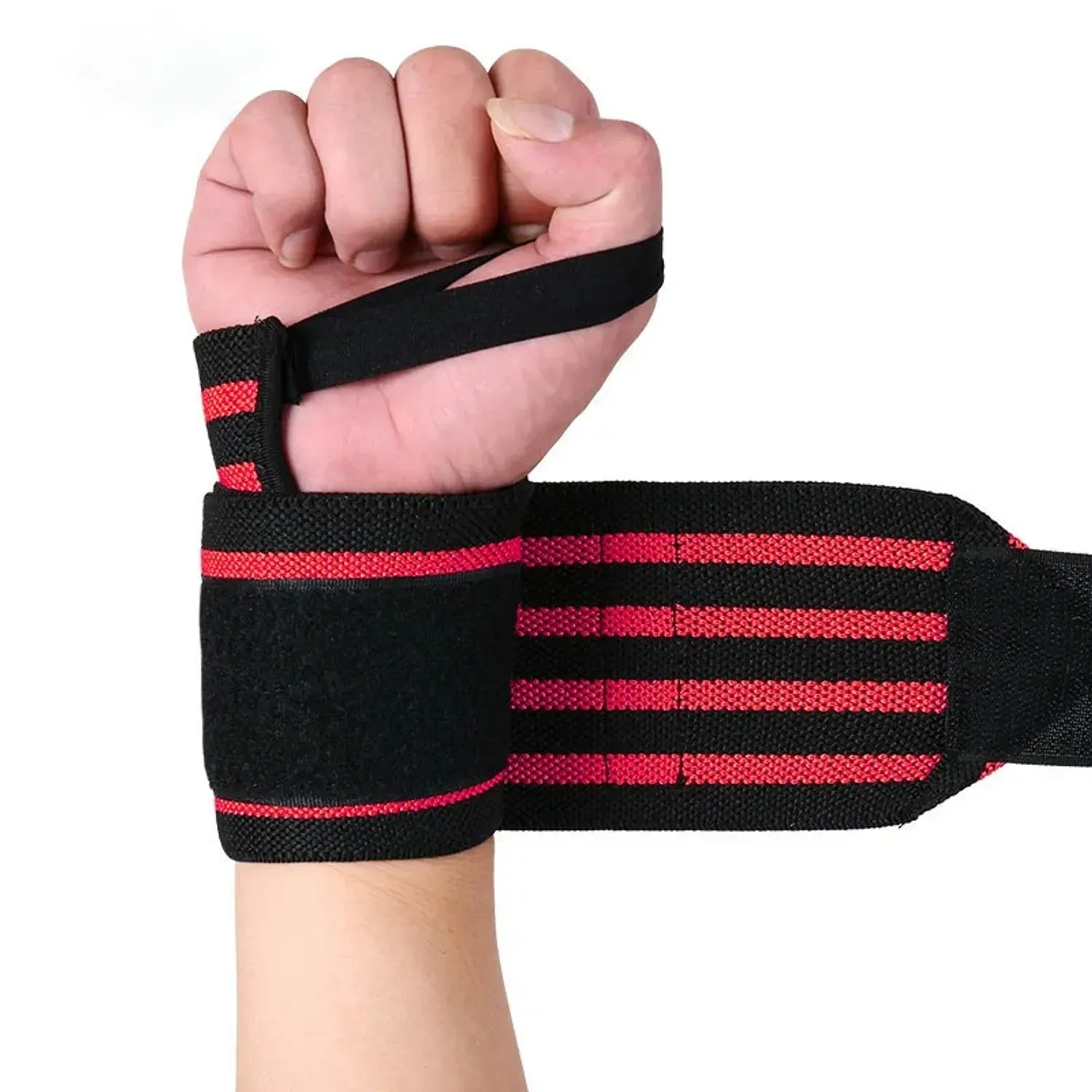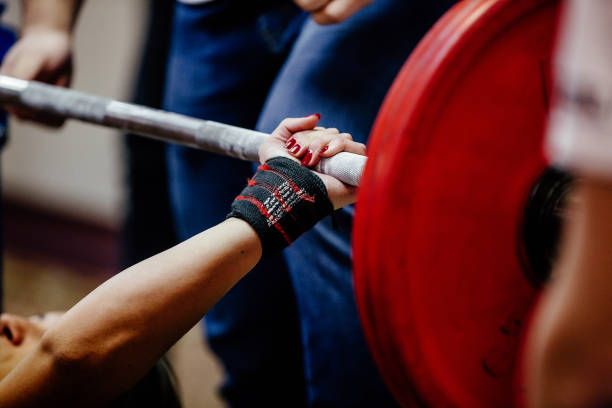john@lee-mat.com
+86-13510662576

GET QUOTE
How to Wear Wrist Support?
Properly wearing wrist support offers a range of benefits, including reduced pain and discomfort, improved posture, and enhanced performance during physical activities. By understanding the different types of wrist support available and how to wear them correctly, you can maximize these benefits and enjoy greater comfort and functionality in your daily life.
Choosing the Right Wrist Support
When selecting wrist support, it's essential to consider several factors to ensure it meets your specific needs. Firstly, assess the type of injury or condition you're dealing with, whether it's sprains, strains, or carpal tunnel syndrome. Different types of wrist support offer varying levels of compression and stabilization, tailored to address specific issues. Additionally, consider the level of support needed based on your activity level and the intensity of your physical exertion. Whether you're an athlete or someone with a sedentary lifestyle, choosing the right wrist support can make a significant difference in your comfort and recovery process.
Proper Techniques for Wearing Wrist Support
Step-by-Step Guide
Wearing wrist support correctly is crucial for maximizing its benefits and minimizing discomfort. Start by placing the wrist support on your affected arm, ensuring the metal insert aligns with the inside of your arm and palm. Secure the straps over the back of your arm, adjusting them to your desired level of support. Avoid fastening them too tightly, as this can restrict movement and cause discomfort. Ensure the wrist support fits snugly around your wrist without sliding up or down, and make necessary adjustments for the perfect fit. Lastly, ensure the wrist support doesn't impede finger movement, allowing you to bend and flex them freely.
Adjusting Tightness
Adjusting the tightness of your wrist support is essential for both comfort and effectiveness. While a tighter wrap provides more support, it may limit flexibility. Strike a balance by ensuring the support is snug enough to provide stability without compromising your range of motion. Experiment with different levels of tightness during activities to find what works best for you. Remember, proper adjustment is key to wearing wrist support comfortably and going about your daily activities without restrictions.
Activities You Can Still Do with Wrist Support
Maintaining Functionality during Daily Tasks
Wearing wrist support doesn't mean you have to put your life on hold. You can continue with your daily activities while benefiting from the added stability and protection provided by the support. Whether it's typing on a keyboard, cooking a meal, or simply going about your day, wrist support allows you to maintain functionality and comfort without compromising your wrist health.
Exercises and Sports Suitable for Wearing Wrist Support
Wrist support is not just for rest; it's also for action. If you're an active individual or an athlete, you'll be glad to know that you can still engage in various exercises and sports while wearing wrist support. From weightlifting and yoga to running and cycling, wrist support can help prevent injuries and provide extra support during intense physical activities. Just ensure you choose the right type of support for your specific exercise routine to optimize performance and minimize the risk of strain or injury.
When to Wear and Remove Wrist Support
Knowing When to Wear Wrist Support for Maximum Benefit
Understanding when to wear wrist support is crucial for maximizing its benefits. If you're recovering from an injury or dealing with chronic wrist pain, wearing support during activities that exacerbate the condition can provide much-needed relief and stability. Additionally, wearing wrist support during high-impact activities or sports can help prevent injuries and promote optimal performance. Listen to your body and use wrist support as needed to support your wrist health and overall well-being.
Avoiding Prolonged Usage to Prevent Muscle Weakness
While wrist support offers valuable benefits, it's essential to avoid prolonged usage to prevent muscle weakness and dependence on the support. Remove the support during periods of rest or when engaging in activities that don't require extra stability. Giving your wrist regular breaks allows the muscles to strengthen and maintain flexibility, reducing the likelihood of reliance on external support in the long run. Follow a balanced approach to wrist support usage, incorporating rest periods to promote muscle health and overall wrist function.
Common Mistakes to Avoid
Identifying and Rectifying Errors in Wearing Wrist Support
While wearing wrist support can be beneficial, it's essential to be aware of common mistakes that can compromise its effectiveness. One mistake to avoid is wearing the support too loosely, which fails to provide adequate stability and support to the wrist. Conversely, wearing it too tightly can restrict blood flow and cause discomfort. Additionally, failing to align the support properly with the wrist joint can result in inadequate coverage and support. By identifying and rectifying these errors, you can ensure that you're getting the most out of your wrist support and minimizing the risk of injury or discomfort.
Ensuring Proper Alignment and Fit for Optimal Support
Proper alignment and fit are key factors in maximizing the benefits of wrist support. Ensure that the support is positioned correctly over the wrist joint, covering both above and below to provide full coverage and stability. Adjust the tightness of the support to achieve a snug yet comfortable fit, allowing for freedom of movement while providing adequate support during activities. By paying attention to proper alignment and fit, you can optimize the effectiveness of your wrist support and prevent common errors that may compromise its benefits.
By avoiding these common mistakes and ensuring proper alignment and fit, you can maximize the effectiveness of your wrist support and minimize the risk of injury or discomfort during activities. Remember to listen to your body and adjust the support as needed to maintain comfort and stability while promoting optimal wrist health.
Conclusion
Proper wrist support is essential for maintaining wrist health and preventing injuries during various activities. By choosing the right wrist support and wearing it correctly, individuals can experience improved stability, reduced pain, and enhanced performance in their daily lives and physical endeavors. However, it's crucial to avoid common mistakes and ensure proper alignment and fit for optimal support.
For those seeking high-quality wrist wraps that combine durability, comfort, and effectiveness, I highly recommend considering Lee-Mat's Wrist Wraps. With their ergonomic design and adjustable fit, Lee-Mat's Wrist Wraps provide the perfect balance of support and flexibility, allowing users to engage in a wide range of activities with confidence and comfort. Whether you're a seasoned athlete or someone recovering from a wrist injury, investing in Lee-Mat's Wrist Wraps can make a significant difference in your wrist health and overall well-being.


